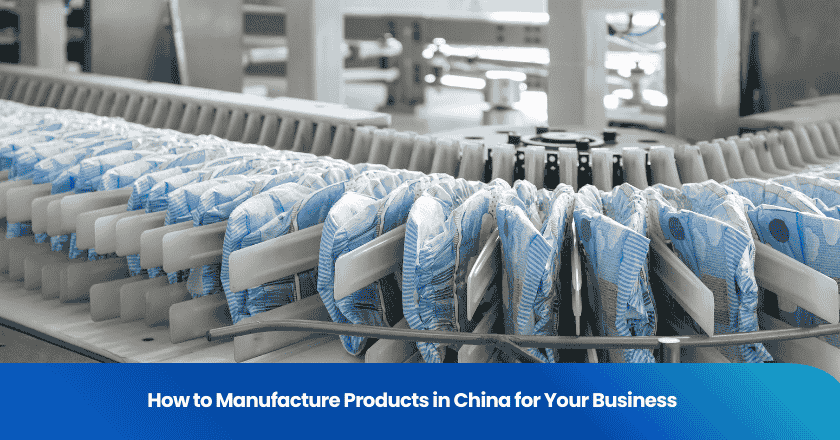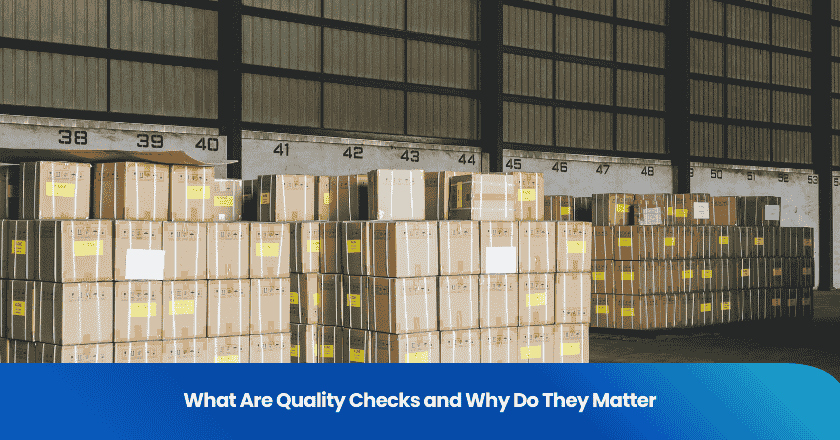
You want to know how to get things made in china for your business. Start with a clear plan and focus on details. Research suppliers, study their capabilities, and communicate your needs. When you ask how to get things made in china, you need to check quality, negotiate terms, and understand logistics. Always verify information and keep your goals in mind. If you wonder how to get things made in china, you must act with diligence and stay organized throughout the process.
Key Takeaways
- Start with clear product specifications to avoid mistakes and help suppliers understand your needs.
- Set quality standards early and verify them with inspections to ensure consistent product quality.
- Find and verify reliable suppliers by checking licenses, certifications, and factory capabilities.
- Communicate clearly and keep written records to build trust and prevent misunderstandings.
- Request samples, negotiate terms, and plan shipping carefully to protect your business and ensure smooth delivery.
How to Get Things Made in China
Define Product Specs
You must start with clear product specifications. Precise details help you avoid misunderstandings and costly mistakes. List every feature your product needs, including dimensions, materials, colors, and packaging requirements. Use drawings, CAD files, or reference samples to illustrate your expectations. Suppliers in China rely on these specs to estimate costs and plan production.
Tip: Create a checklist for your product specs. This checklist helps you track changes and ensures consistency throughout the process.
| Spec Type | Example | Why It Matters |
|---|---|---|
| Dimensions | 10cm x 5cm x 2cm | Ensures proper sizing |
| Material | ABS plastic | Impacts durability |
| Color | Pantone 186C | Maintains brand image |
| Packaging | Individual polybag | Protects during transit |
You set the foundation for how to get things made in china by defining specs early. This step streamlines communication and reduces errors.
Set Quality Standards
You need to establish quality standards before you begin manufacturing your product. Quality standards protect your business and satisfy your customers. Define acceptable tolerances, performance criteria, and safety requirements. Share these standards with your supplier and request written confirmation.
Note: Ask for documentation of their quality control processes. This documentation helps you verify that your supplier can meet your standards.
You should specify inspection methods, such as visual checks, functional tests, or third-party audits. Clear standards make it easier to resolve disputes and maintain consistency. You can use a simple table to organize your requirements:
| Quality Aspect | Standard | Inspection Method |
|---|---|---|
| Appearance | No scratches or marks | Visual check |
| Functionality | Works as intended | Functional test |
| Safety | Meets local regulations | Third-party audit |
You ensure that every batch meets your expectations when you set quality standards from the start.
Prepare Prototypes
You should prepare prototypes to test your design and confirm your specifications. Prototypes allow you to evaluate materials, construction, and overall appearance. You can request samples from your supplier or use a local prototyping service.
Prototypes help you identify issues before mass production. You save time and money by catching problems early.
You should review the prototype and provide feedback. Make adjustments as needed and request a revised sample if necessary. This step is essential for how to get things made in china because it bridges the gap between your concept and the final product. You gain confidence in your supplier’s capabilities and reduce risks in manufacturing your product.
Find Suppliers
Sourcing Platforms
You need to explore several options when searching for suppliers in China. Online b2b marketplace platforms offer a wide range of manufacturers and products. Popular choices include Alibaba, 1688.com, Made-in-China.com, and Global Sources. These platforms allow you to compare suppliers, review product catalogs, and check ratings. You can also work with sourcing companies or sourcing agents if you want expert support. Sourcing companies help you identify reliable factories and manage negotiations. Sourcing agents act as your local representatives and can bridge language gaps.
Tip: Create a shortlist of suppliers from different platforms. This approach helps you compare prices, production capabilities, and minimum order quantities.
Verify Manufacturers
You must verify every manufacturer before you start sourcing and purchasing products. Reliable suppliers provide business licenses, certifications, and factory audit reports. Ask for copies of these documents and check their authenticity. You should request references from other clients and review feedback on the supplier’s profile. Use video calls or factory visits to confirm production facilities. A simple table can help you track verification steps:
| Verification Step | Action Required | Result |
|---|---|---|
| License Check | Request business license | Confirm legitimacy |
| Certification Review | Ask for certificates | Ensure compliance |
| Factory Audit | Schedule inspection | Assess capabilities |
You reduce risks and avoid scams when you verify manufacturers thoroughly.
Communicate Effectively
Clear communication is essential when working with suppliers in China. You should use simple language and avoid jargon. Confirm every detail in writing, including product specs, payment terms, and delivery schedules. You need to understand business culture and respect local customs. Respond promptly to messages and keep records of all conversations. Effective communication builds trust and prevents misunderstandings.
Note: Use messaging apps or email for daily updates. Written records help you resolve disputes and track progress.
Order Products from China
Request Quotes
You start by requesting quotes from your shortlisted suppliers. Provide clear product specifications and quantities. Suppliers respond with pricing, lead times, and minimum order requirements. You compare these details to find the best fit for your business.
Tip: Ask for a breakdown of costs, including tooling, packaging, and shipping. This helps you avoid hidden fees.
A simple table can help you organize supplier quotes:
| Supplier | Unit Price | MOQ | Lead Time | Shipping Cost |
|---|---|---|---|---|
| Supplier A | $2.50 | 500 | 20 days | $300 |
| Supplier B | $2.40 | 1000 | 15 days | $250 |
You use this information to make informed decisions before you order products from china.
Get Samples
You request samples to evaluate product quality and confirm specifications. Samples allow you to check materials, craftsmanship, and packaging. You pay a sample fee, which some suppliers refund after placing a bulk order.
- Inspect samples for defects or inconsistencies.
- Test functionality and durability.
- Share feedback with the supplier for improvements.
Samples give you confidence in your supplier’s capabilities. You reduce risks by verifying quality before mass production.
Negotiate Terms
You negotiate terms to protect your interests and ensure smooth transactions. Discuss payment schedules, delivery timelines, and warranty policies. Clarify responsibilities for delays or defects.
Note: Put all agreements in writing. Written contracts prevent misunderstandings and provide legal protection.
You may negotiate for better prices, flexible payment options, or improved packaging. Strong negotiation skills help you build long-term supplier relationships.
Clothing Manufacturers in China
Find Garment Factories in China
You can find garment factories in china by using online sourcing platforms, trade shows, and industry directories. Start by searching for clothing manufacturers in china on platforms like Alibaba or Made-in-China.com. These sites let you filter by product type, minimum order quantity, and certifications. You can also attend trade fairs in China to meet suppliers face-to-face and see product samples. Many business owners use sourcing agents who have local knowledge and can help you identify reliable partners.
Tip: Create a shortlist of potential factories. Compare their production capabilities, lead times, and communication skills before making a decision.
Check Compliance
You must check compliance when working with clothing manufacturers in china. Compliance covers product safety, labor standards, and environmental regulations. Ask each factory for copies of their certifications, such as ISO or BSCI. Review audit reports and confirm that the factory meets your country’s import requirements. You should also verify that the factory follows ethical labor practices.
| Compliance Area | What to Check | Why It Matters |
|---|---|---|
| Product Safety | Test reports, certifications | Avoids legal issues |
| Labor Standards | Audit reports | Ensures ethical sourcing |
| Environmental | Waste management policies | Supports sustainability |
Note: Non-compliance can lead to shipment delays or customs problems. Always confirm documentation before placing an order.
Quality Control for Apparel
You need to set up strict quality control when working with the best clothing manufacturers in china. Define your quality standards for fabric, stitching, and finishing. Request pre-production samples and inspect them for defects. During production, arrange for third-party inspections to check random batches. After production, review the final goods before shipment.
- Inspect fabric for color consistency and strength.
- Check stitching for evenness and durability.
- Review packaging to ensure it protects the garments.
Quality control helps you maintain your brand reputation and reduces the risk of returns or complaints.
Production, Payment, and Shipping
Place Orders
You need to finalize your order details before production begins. Review the contract carefully. Confirm product specifications, quantities, prices, and delivery schedules. Make sure the contract includes penalties for delays or defects. You should keep a copy of all agreements for your records.
Tip: Always double-check the contract terms. Clear agreements help prevent disputes later.
Payment Methods
You have several payment options when purchasing goods in china. Common methods include bank transfers (T/T), letters of credit (L/C), and online payment platforms. Each method offers different levels of security and speed. Letters of credit provide strong protection but may cost more. Bank transfers are faster but require trust in your supplier.
| Payment Method | Security Level | Processing Time | Typical Use Case |
|---|---|---|---|
| Bank Transfer | Medium | 1-3 days | Bulk orders |
| Letter of Credit | High | 3-7 days | Large transactions |
| Online Platform | Medium | Instant-2 days | Small sample orders |
Note: Use secure payment channels and avoid sending money to personal accounts.
Inspections
You should arrange inspections at different stages of production. Pre-production checks verify raw materials. In-process inspections catch problems early. Final inspections confirm quality before shipping. You can hire third-party inspection services for unbiased results.
- Inspect samples from each batch.
- Review packaging and labeling.
- Document any issues and request corrections.
Regular inspections help you maintain quality and avoid costly mistakes.
Shipping and Customs
You must plan your shipping and customs process. Choose between air, sea, or rail freight based on your budget and timeline. Calculate shipping costs, insurance, and customs duties. Check the latest tariffs for your destination country. Prepare all required documents, such as invoices and packing lists.
Shipping delays can occur due to customs checks or port congestion. Build extra time into your delivery schedule.
A simple checklist for shipping:
- Confirm shipping method and timeline
- Prepare customs paperwork
- Calculate total landed cost (product + shipping + duties)
- Track your shipment until delivery
Efficient logistics ensure your products arrive safely and on time.
You can succeed in manufacturing products in China by following a clear process. Define your product, find and verify suppliers, communicate your needs, and check quality at every stage.
Strong supplier relationships and regular inspections protect your business.
Checklist for your sourcing journey:
- Set detailed product specs
- Verify supplier credentials
- Request and review samples
- Negotiate clear terms
- Arrange inspections
- Plan shipping and customs
Stay curious and keep learning as your business grows.
FAQ
What documents do you need to import products from China?
You need a commercial invoice, packing list, bill of lading, and import permits. Customs may request additional certificates depending on your product type.
How do you protect your payment when ordering from China?
You can use secure payment methods like letters of credit or escrow services. Always confirm supplier details and keep written agreements for every transaction.
What is the typical lead time for manufacturing in China?
Lead times vary by product and order size. Most suppliers need 15 to 45 days for production. Shipping adds extra time based on your chosen method.
How do you handle quality issues after receiving goods?
You should document all defects with photos. Contact your supplier immediately. Refer to your contract for solutions like replacements, refunds, or repairs.
Grow your business with TradeAider Service
Click the button below to directly enter the TradeAider Service System. The simple steps from booking and payment to receiving reports are easy to operate.



